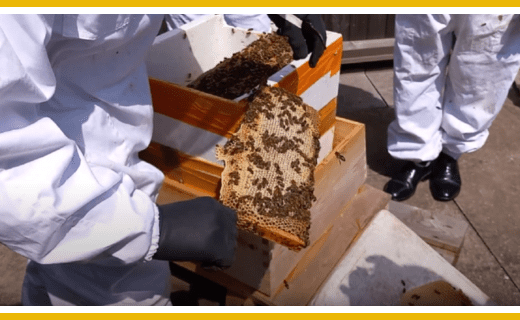06 July 2023
A south London residential development with an eco-friendly focus has welcomed two hives of honeybees, in a bid to help both the bee population and the local environment.
Greenland Place in Lewisham consists of almost 700 apartments set over five acres of land, with self-sustaining green roofs, a wildflower garden, and now urban beekeeping.
The two hives were installed last December on one of the development’s roof terraces.
Residents will be able to find out the latest updates on the bees on their internal portal and they will even be given the opportunity to get involved during each monthly beekeeping visit.
FirstPort Development Manager George Proctor said:
“I have been looking to get bees at Greenland Place for five years now. It wasn’t until recently when I spoke with our landscaping contractor that I was told about BeesMAX, who we now hire the hives from.
“They are thriving, and we will be able to get access to raw unpasteurised honey later in the year, which will be in Greenland Place branded jars.
“Residents love it, and they can get involved as much as they want. We’ll be putting together a booking system so when the beekeeper visits, residents and sometimes colleagues will be able to accompany him.
“We are doing our little bit to save the planet and I found out that when bees establish their hives, they can forage within 3 square km of the hive. We have Southwark Park, Deptford Park right on our doorstep so it’s a really great location for them.”
Mark Gale of BeesMAX, added:
“Residents will get the experience of being totally immersed within the colony and its whole environment, so we’ll be focusing on the bees, the dressing up to go and see the bees, putting on the PPE, and holding the frames and then seeing where the honey is made and how it’s made, where the Queen is and what she does.
“They can see the brood nest and understand the whole ecosystem within the nest and how they function, because there’s over 70 or 80,000 bees in there.”



